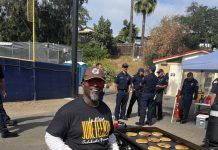It is no secret that East County and San Diego proper have been embroiled in a nasty homelessness epidemic which has put unfortunate strains between community residents and local officials. One can seldom listen to the radio for longer than ten minutes before hearing at least some reference to this issue.
It is no secret that East County and San Diego proper have been embroiled in a nasty homelessness epidemic which has put unfortunate strains between community residents and local officials. One can seldom listen to the radio for longer than ten minutes before hearing at least some reference to this issue.
While there have been many proposed fixes to the homelessness crisis in San Diego, most have been stymied by stringent state regulations which inhibit San Diego county from acting effectively, and any solution which the city has managed to put forth has been either a complete failure or an incomplete solution.
In studying the root of the issue, officials have concluded that lack of affordable housing is one of the main causes of the homelessness problem and it is not hard to see why. The housing bubble in San Diego has been inflating for decades and affordable real estate is remarkably hard to come by.
That is why the recently proposed bill by State Assemblywoman Marie Waldron to streamline the financing for mobile homes seems to be a step in the right direction. Assemblywoman Waldron’s bill, Bill 1943, allows owners of mobile or manufactured homes to use the Form 433A process rather than the Form 433C process.
To clarify, the 433A form is issued as an IRS document that is required in situations where an individual owes Federal income tax that cannot be paid in full. 433C forms are issued for manufactured home conversions into real property.
On the surface, this might seem like a trivial change, but it could have beneficial reverberations if passed.
Why? Well, currently, the state will only issue 433A Forms if an owner of a mobile home also owns the land beneath the place where the mobile home is parked. However, since most mobile home owners live in mobile home parks, they do not, in fact, own the land underneath their home so they must use the Form 433C process.
Why is this a problem? Unfortunately, most lenders do not accept Form 433C when residents seek financing.
This takes us full circle, back to the original problem of the homeless crisis. For many, mobile homes are a cheap and effective alternative to the skyrocketing real estate costs in San Diego. Many homeless individuals could use mobile homes as means for housing but under the current law it is very difficult.
Bill 1943 would streamline the process and, in turn, open up several opportunities for homeless and financially insecure individuals to get the financing they need to turn their life around. Of course, Bill 1943 is not a standalone panacea for the homeless problem, but it is, as I said, a step in the right direction.
Coupled with city and statewide initiatives, Bill 1943 has the potential to be a stitch in the series of seams which could close the wound homelessness afflicting San Diego County.












